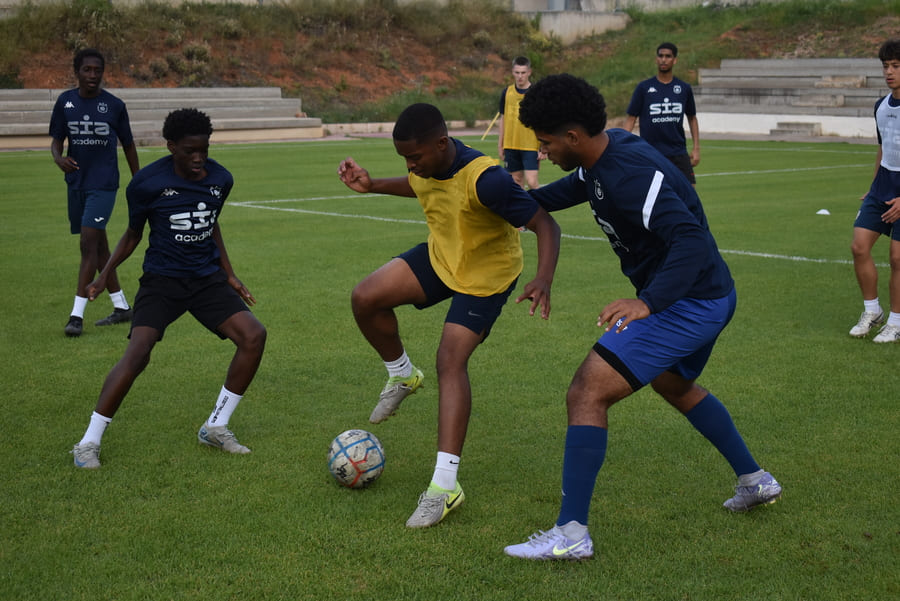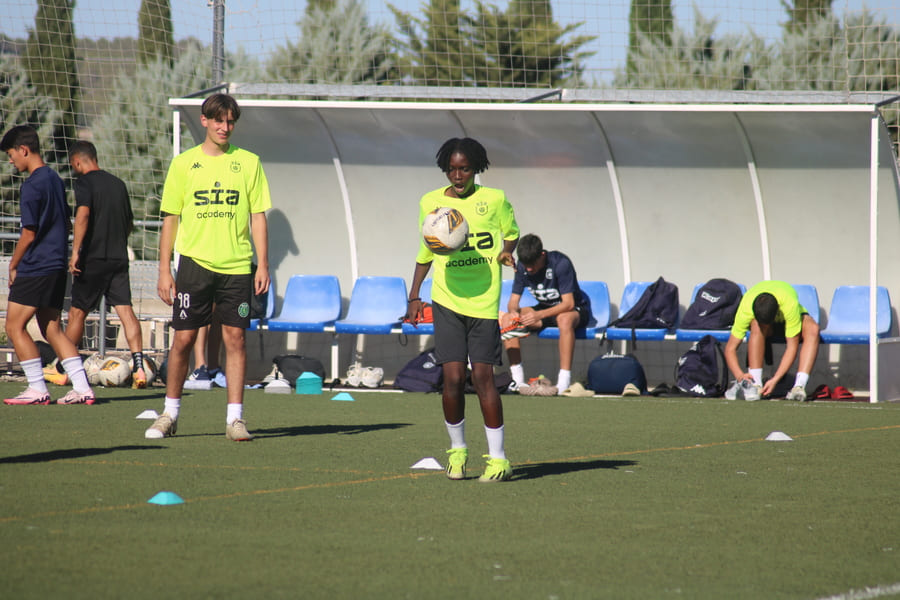The playmaker is that special player who lives between the lines, connects midfield with the attack, and turns ideas into goal-scoring opportunities. He’s not just the classic number 10—he’s the creative brain of the team: the one who invents, sees what others don’t, and transforms an ordinary play into something extraordinary.
In modern football, where intensity and tactics dominate almost everything, the role of the playmaker has evolved but hasn’t lost its essence. At SIA Academy, this profile remains essential for shaping intelligent, creative, and strategic footballers.
“At SIA Academy we don’t just train athletes; we train football minds. The playmaker is a profile we continue to develop because it represents the intelligence of the game,” says Rafa, sports director of the academy.
Table of contents
The playmaker: more than just a number 10
Traditionally, the playmaker operates in the space between the midfield and the forward line. Their mission is clear: generate play, deliver key passes, and make the team flow offensively. They might not stand out for their physicality, but their reading of the game, ball control, and vision are unmatched.
Legendary players like Juan Román Riquelme or Zinedine Zidane made this role iconic. Today, players like Dybala or Griezmann take on a more modern, dynamic version of it, with added tactical responsibility.
“The playmaker has to think before receiving the ball. At SIA Academy, we train that mental anticipation every day,” adds Rafa.

5 tips to master the playmaker role on the pitch
1. Move between lines with intention
The secret to being great is showing up in spaces the opponent doesn’t expect. Moving between lines isn’t just floating on the field—it’s knowing exactly when to receive the ball with an advantage.
At SIA Academy, this skill is trained through positional play, pressured passing circuits, and off-the-ball game reading.
2. Control and turn like a master
In this role, your first touch must prepare you for your next action. Whether launching a pass, shielding the ball, or turning in a tight space, mastering the technical move is vital.
SIA uses reduced-space scenarios to train speed and precision, simulating high-pressure, real-game situations.
3. Make split-second decisions
It’s not just about spotting a pass—it’s knowing when to deliver it. The modern player needs peripheral vision, mental quickness, and solid judgment. At the academy, this is developed through video analysis and scenario-based simulations.
Decision-making is one of the key pillars in SIA’s high-performance program.
4. Learn to pause and accelerate the play
It’s not always about playing fast: sometimes a smart pause can dismantle an entire defense. Reading the tempo of the match is what makes you a true playmaker.
SIA devotes specific sessions to this concept, working on timing exercises and controlled possession drills.
5. Lead through your play and your voice
Even if the playmaker isn’t the captain, they are a leader on the pitch. They direct with their vision, positioning, and understanding of the system. Communication and influencing teammates are part of the role.
At SIA, leadership is trained through mental development sessions, teamwork, and emotional intelligence coaching.

Does the playmaker have a future in modern football?
Despite trends toward more rigid or physical systems, the playmaker hasn’t disappeared—it has evolved. Now, they are expected to cover more ground, press effectively, and contribute defensively. But their essence—to create and inspire—remains irreplaceable.
Academies like SIA continue to bet on this profile, convinced that football needs brains just as much as it needs legs.
“The modern playmaker must not only create—he must also work without the ball, press, and read the whole game. He hasn’t disappeared; he’s transformed,” explains Rafa.







I want to be part of it
I like it
I wanted to join the playmaker tips bit